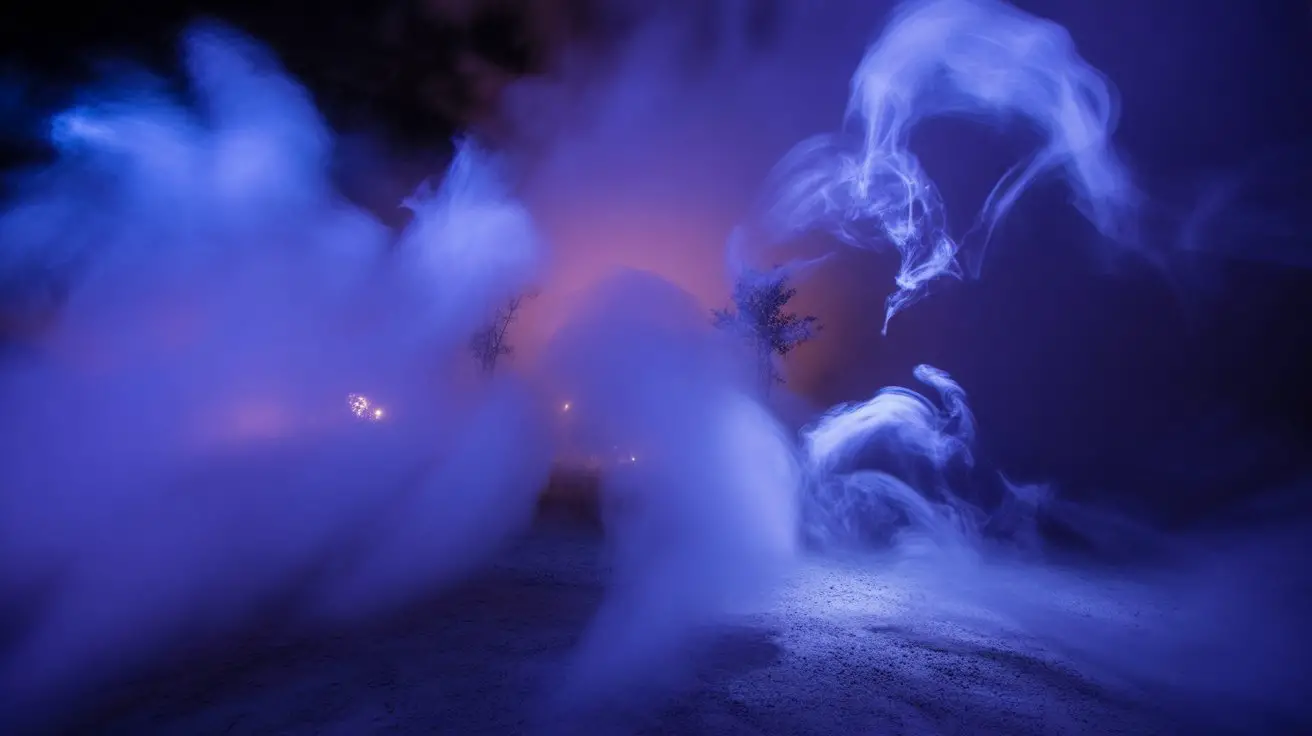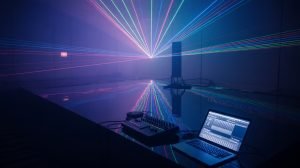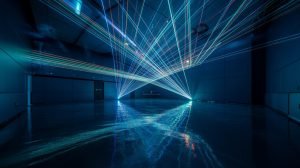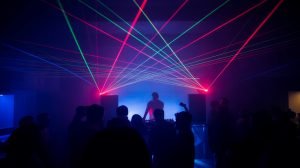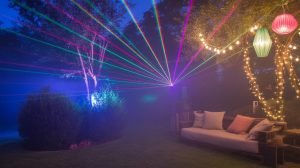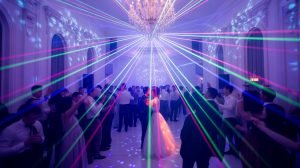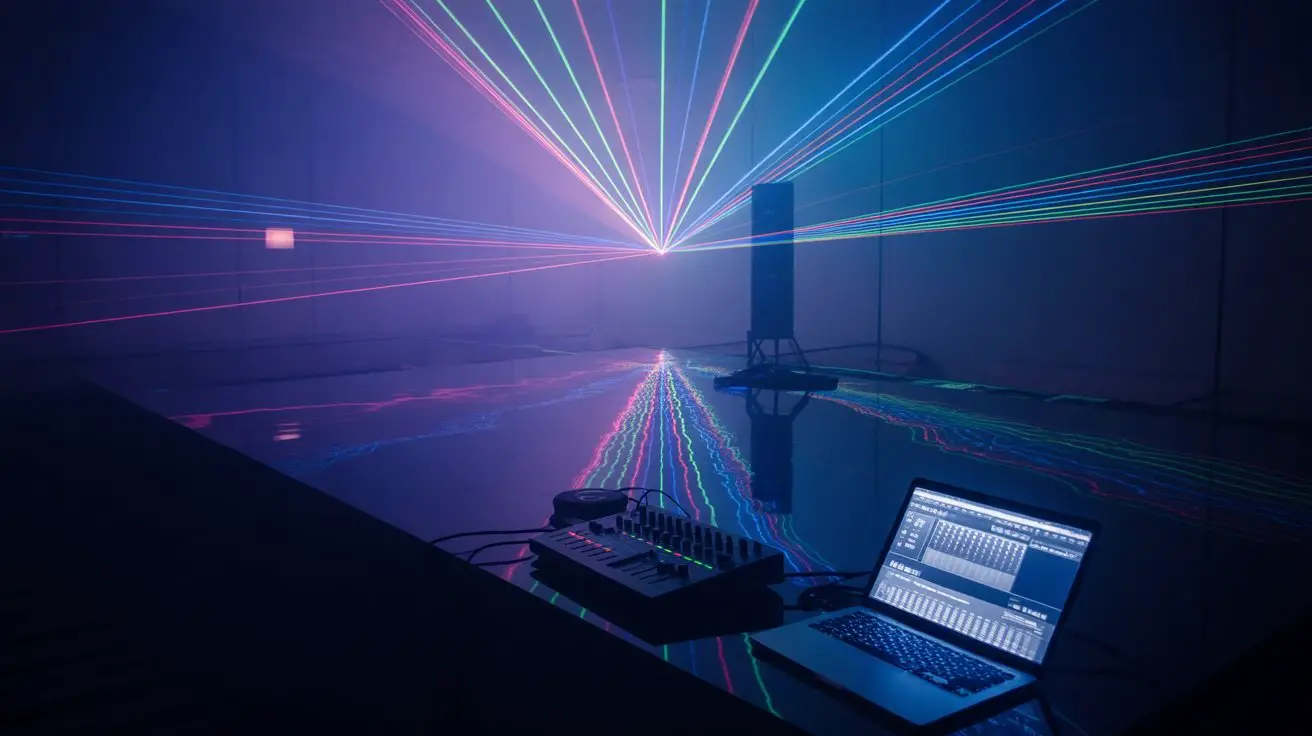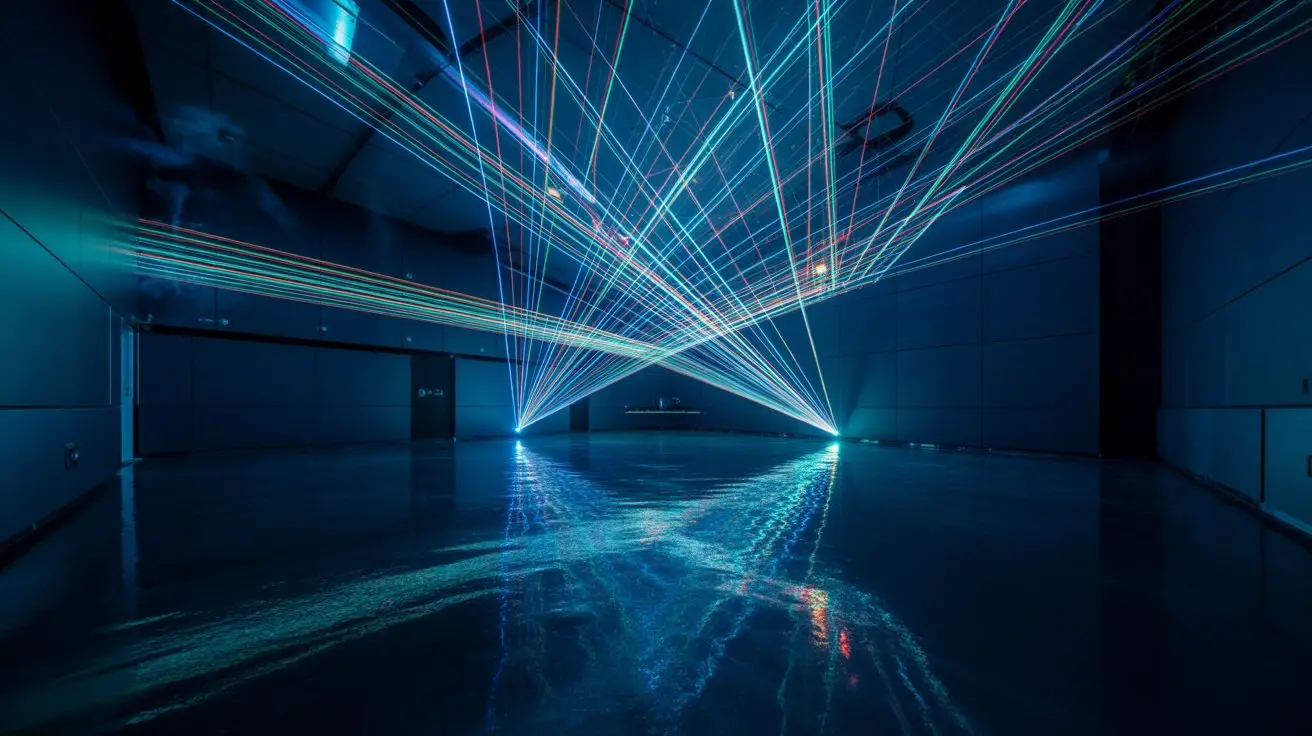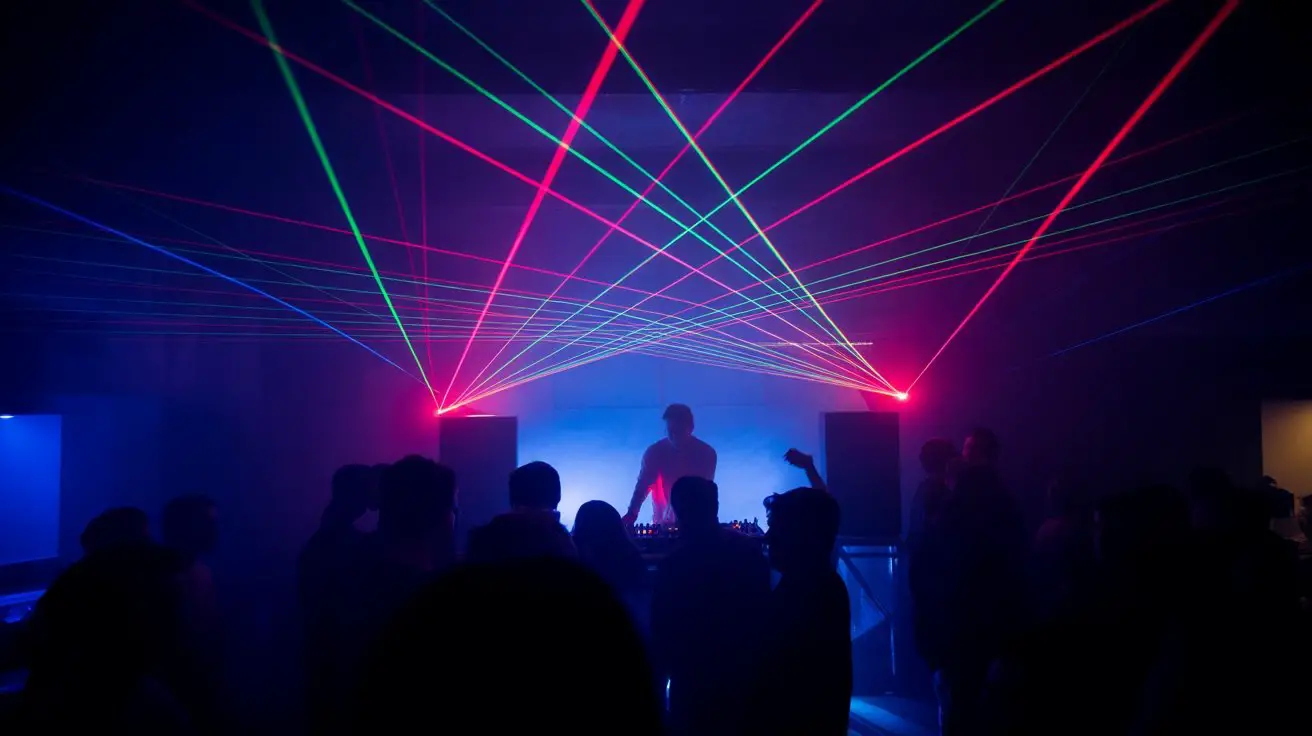At Universal Studios’ Halloween Horror Nights, fog machines paired with black lights create an otherworldly atmosphere that transforms ordinary spaces into haunting spectacles. You’ll achieve this dramatic effect by understanding how UV wavelengths interact with glycol-based fog particles to produce an ethereal glow. The positioning of your equipment, timing sequences, and proper ventilation become critical factors that determine whether you’ll create professional-grade ambiance or encounter frustrating technical failures that compromise your entire setup.
Understanding the Science Behind UV Light and Fog Interaction
Why does fog appear to glow dramatically under ultraviolet illumination?
You’re witnessing Rayleigh scattering combined with fluorescence phenomena. UV photons at 365-400 nanometers interact with fog particles containing glycol compounds, exciting electrons to higher energy states. When these electrons return to ground state, they emit visible light photons at longer wavelengths, creating that ethereal blue-white luminescence you see.
The particle size matters critically—optimal droplets measure 0.3 to 3.0 microns in diameter. Smaller particles scatter UV light more efficiently, while larger droplets absorb excessive energy without re-emission.
Your fog machine’s heating element temperature directly affects particle distribution. Higher temperatures produce finer droplets with enhanced UV reactivity.
Atmospheric humidity influences scattering intensity. Lower humidity maintains particle suspension longer, extending the glowing effect’s duration and visual impact throughout your space.
Essential Equipment and Gear Selection
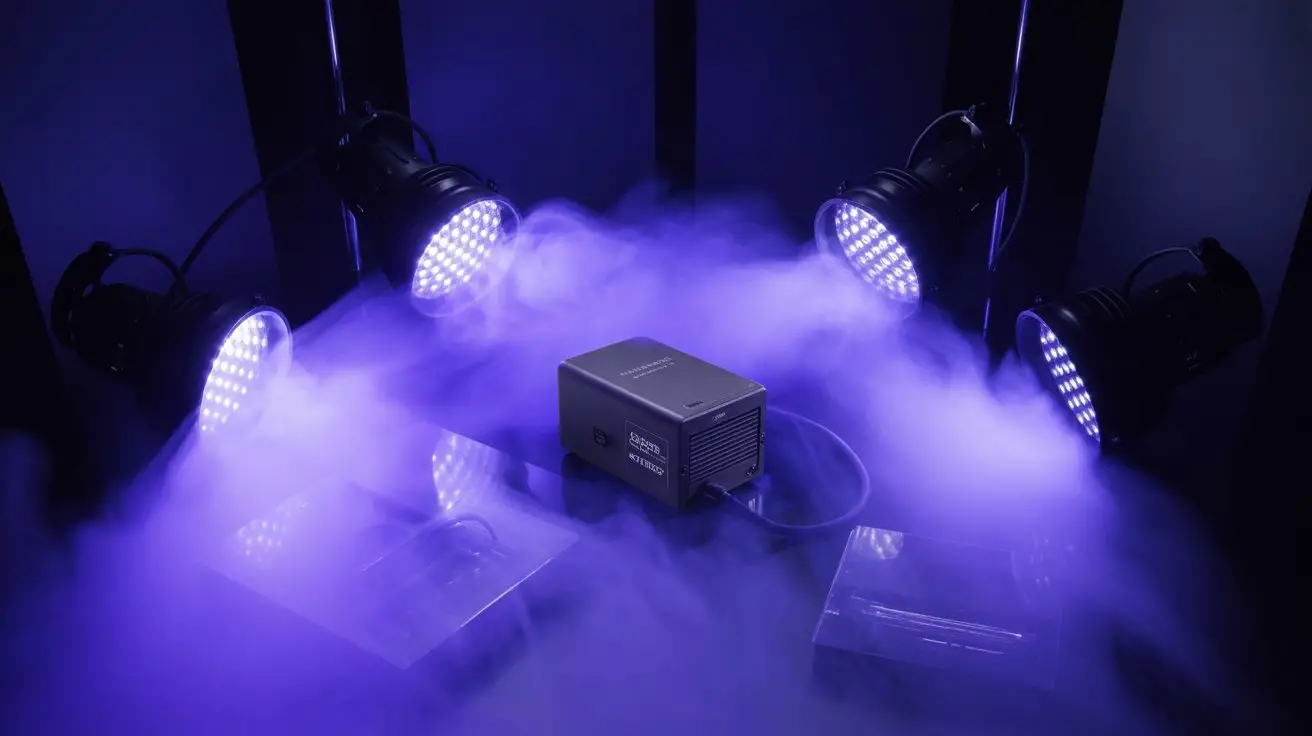
When selecting your fog machine, you’ll need a unit that produces glycol-based fog with consistent particle density between 0.3-3.0 microns. This specification guarantees ideal UV photon absorption while maintaining proper atmospheric suspension.
Professional-grade units with adjustable output controls provide precise density modulation for your lighting environment.
Your black light selection directly impacts fluorescence intensity. Choose fixtures with 365nm peak wavelength for maximum glycol excitation:
- LED UV panels deliver concentrated radiation with minimal heat generation
- Mercury vapor tubes provide broader spectrum coverage for enhanced particle illumination
- Fluorescent UV bulbs offer cost-effective solutions for smaller installations
Position your fixtures at 45-degree angles from fog output points to maximize photon interaction.
Install DMX controllers to synchronize fog density with light intensity, creating dynamic visual shifts throughout your performance space. Additionally, using glycerin-based smoke fluid can further enhance the fog’s interaction with UV light, creating a more dramatic effect.
Optimal Placement and Positioning Strategies
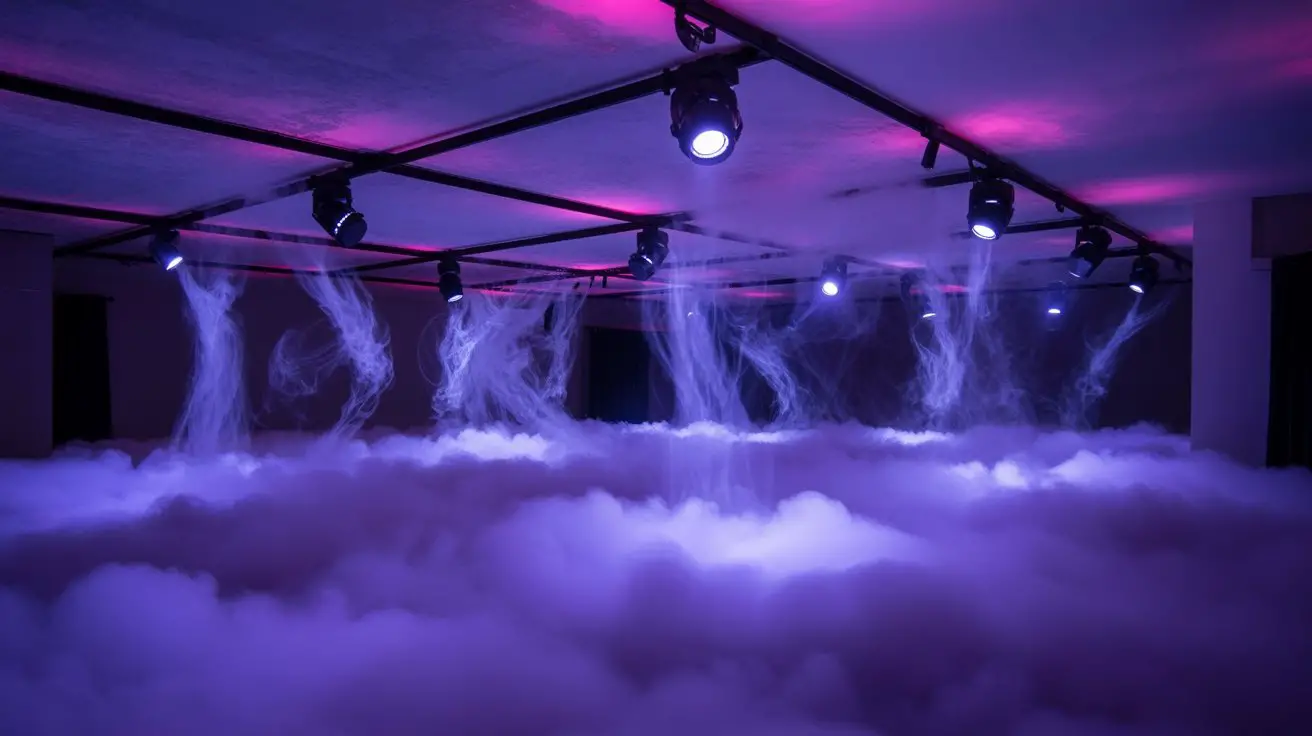
Strategic positioning transforms your synchronized fog and black light system into a cohesive visual experience.
Position your fog machines at ground level or slightly elevated to create layered density gradients. Place black lights 6-8 feet above the fog output zone, angling them at 45-degree downward trajectories for maximum illumination coverage. You’ll achieve ideal fluorescent activation by creating overlapping UV fields without hotspots.
Space multiple fog machines 10-15 feet apart to prevent output conflicts while maintaining consistent atmospheric density. Mount black lights on opposing walls or corners to eliminate shadow zones and guarantee uniform UV distribution.
Consider ambient airflow patterns when positioning equipment—cross-ventilation will disperse fog prematurely, while stagnant air maintains longer suspension times. Your fixture heights should account for participant movement zones, keeping UV sources above head level for safety compliance. Utilizing fog chillers can enhance the low-lying fog effects, making your setup even more visually striking.
Timing Your Effects for Maximum Visual Impact

Because visual impact depends entirely on synchronized activation sequences, you’ll need to coordinate your fog output with black light illumination cycles to create dramatic atmospheric shifts.
Deploy fog machines 30-45 seconds before activating black lights to establish ideal particle density. This pre-staging guarantees maximum fluorescent visibility when UV illumination engages.
Consider these timing protocols for enhanced visual dynamics:
- Pulse sequences – Alternate 15-second fog bursts with 10-second black light intervals for rhythmic atmospheric waves
- Crescendo builds – Gradually increase fog density over 60-90 seconds while slowly ramping black light intensity to peak luminosity
- Blackout reveals – Flood space with fog during darkness, then trigger instant black light activation for dramatic visual reveals
Monitor ambient airflow patterns to prevent premature fog dissipation, adjusting timing intervals based on venue-specific atmospheric conditions and desired effect duration. Keep in mind that fog machines do not set off sprinkler systems, so you can use them without concern for water activation.
Safety Considerations and Ventilation Requirements
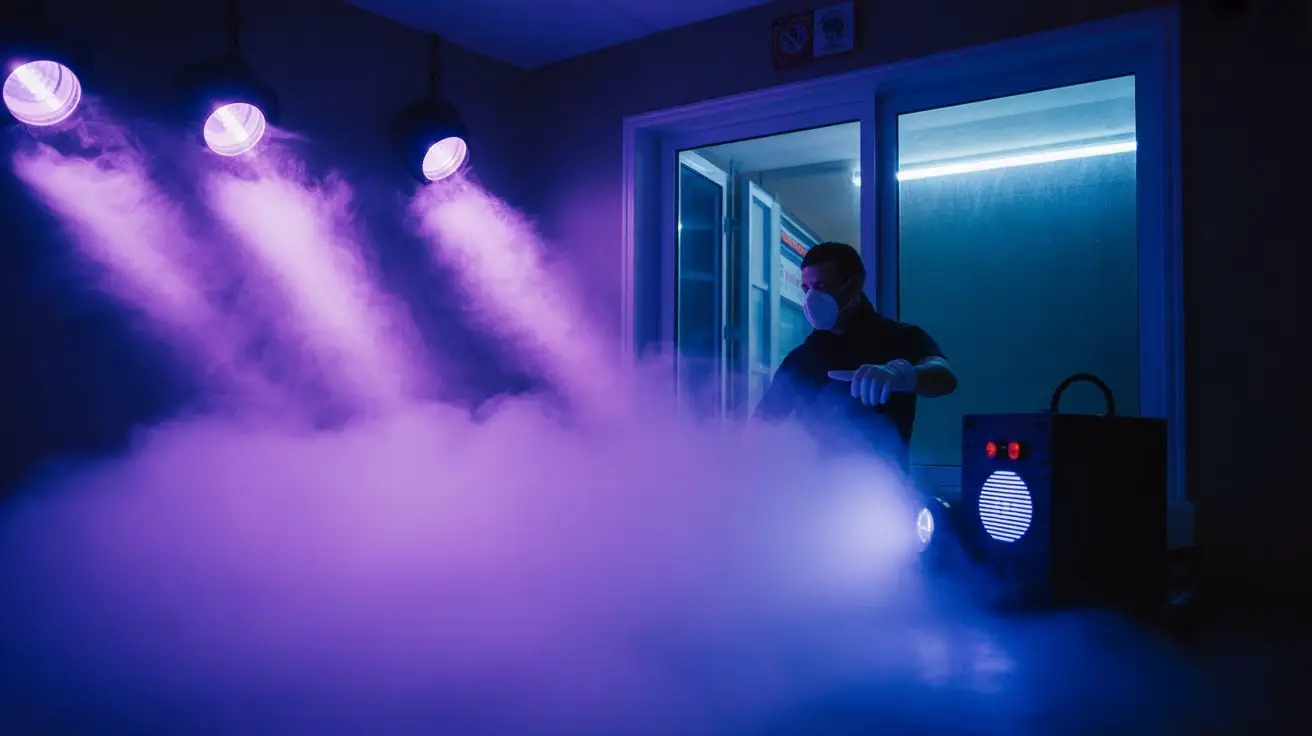
Although fog machines create stunning visual effects under black light illumination, you must prioritize proper ventilation to maintain safe air quality throughout your event space.
Install adequate exhaust fans to circulate fresh air and prevent fog accumulation that can reduce visibility below safe levels. Position intake vents strategically to maintain airflow patterns that distribute fog evenly while removing excess vapor.
Monitor room capacity and implement occupancy limits based on your venue’s cubic footage and ventilation capacity. Use only water-based fog fluids certified for indoor use, avoiding oil-based alternatives that create respiratory hazards. Remember that prolonged exposure to fog can exacerbate respiratory issues, so it’s crucial to keep exposure times limited.
Maintain clear emergency exits at all times, ensuring exit signs remain visible through fog layers. Install smoke detectors compatible with theatrical fog to prevent false alarms while maintaining fire safety protocols.
Troubleshooting Common Setup Problems

Even with proper safety protocols in place, you’ll encounter technical challenges when combining fog machines with black light systems.
Most issues stem from improper fluid selection, inadequate UV output, or poor atmospheric conditions affecting fog density.
Common problems you’ll face include:
- Fog appears dim or invisible – Switch to glycol-based fluids specifically formulated for UV reactivity, as mineral oil-based fluids won’t fluoresce properly under black light.
- Uneven illumination patterns – Reposition your UV fixtures to create overlapping coverage zones and eliminate dead spots in the fog field.
- Rapid fog dissipation – Reduce air circulation, lower ambient temperature, and increase humidity levels to maintain ideal fog particle suspension. Additionally, ensure you are using proper fluid selection to maximize the effectiveness of your fog machine.
Monitor fluid levels continuously and adjust output settings based on venue size and atmospheric conditions.
Advanced Techniques for Different Event Types

When you’re designing fog and black light combinations for specific events, you’ll need to modify your approach based on venue acoustics, audience positioning, and ambient lighting conditions.
For concerts, position fog machines at stage edges to create dramatic backlit silhouettes while maintaining performer visibility.
DJs require low-lying fog patterns with upward-angled UV fixtures to avoid obscuring crowd interaction zones.
Theater productions demand precise fog timing with blackout UV controls for scene changes.
Halloween events benefit from dense fog layers combined with colored gel filters over black lights to create spectral effects.
Wedding receptions need subtle fog dispersal with soft UV accent lighting to enhance romantic ambiance without overwhelming guests.
Adjust fog fluid viscosity and UV lamp intensity based on ceiling height and ventilation rates.
Maintenance and Storage Best Practices
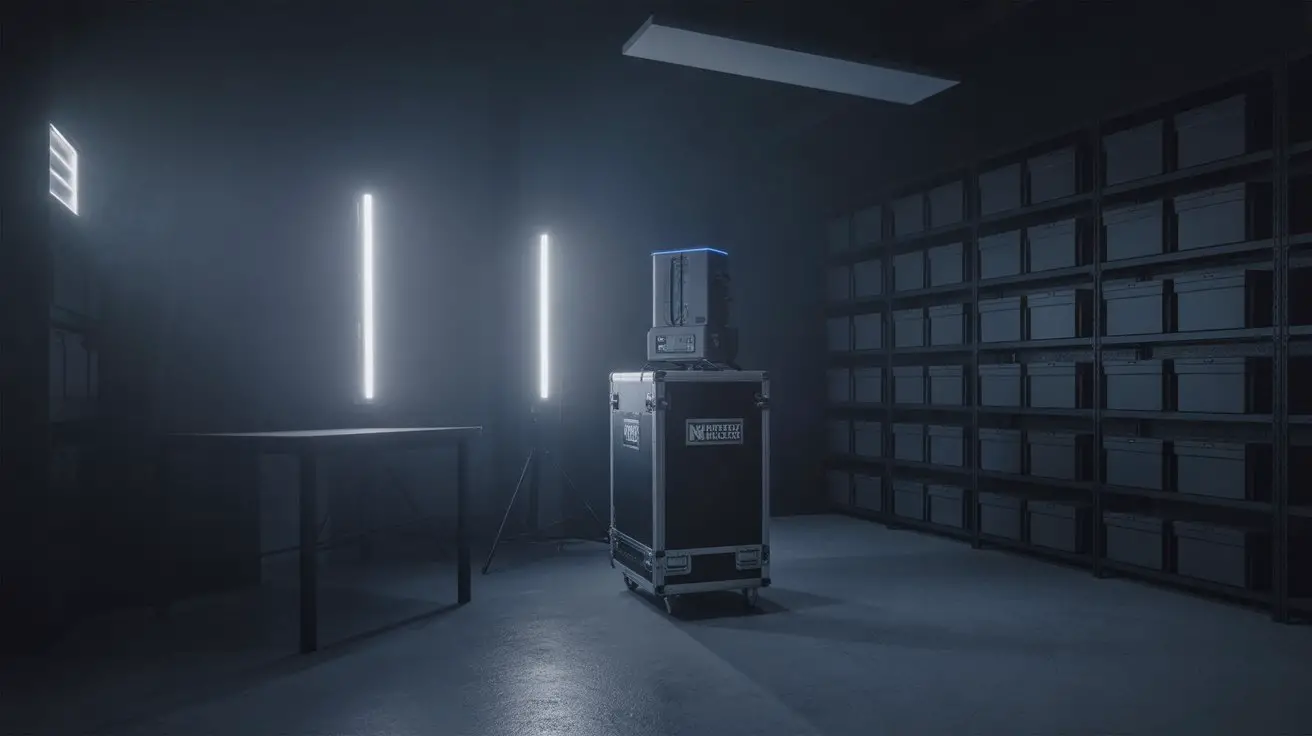
Since fog machines and black light fixtures require consistent performance across multiple events, you’ll need to establish systematic cleaning protocols and environmental storage conditions to prevent component degradation.
For fog machines, flush the fluid reservoir and heating chamber with distilled water after each use to eliminate residual fog juice crystallization. Disassemble removable components and inspect heating elements for mineral deposits.
Store units in climate-controlled environments between 50-70°F with humidity levels below 60%.
Black light maintenance involves:
- Cleaning UV tube surfaces with alcohol-based solutions to remove fog residue buildup
- Inspecting ballast connections for thermal stress indicators and loose terminals
- Calibrating photometric output using UV meters to guarantee consistent 365nm wavelength emission
Store fixtures in foam-lined cases with desiccant packets to prevent moisture infiltration and maintain ideal reflector geometry.
Frequently Asked Questions
Can I Use Homemade Fog Juice With Black Lights?
You can use homemade fog juice with black lights, but guarantee proper glycol-to-water ratios for ideal particle suspension. Commercial formulations typically produce denser, more consistent fog density that enhances UV fluorescence and maintains visibility duration.
Do Colored Fog Fluids Work Better Than Clear Ones Under UV?
Clear fog fluids actually outperform colored ones under UV lighting. You’ll achieve better fluorescent intensity because clear bases don’t compete with ultraviolet wavelengths. Colored additives absorb UV energy, reducing the dramatic luminescent effect you’re targeting for ideal visual impact.
Will Black Lights Damage My Fog Machine Over Time?
UV radiation won’t directly corrode your fog machine’s internal components since black lights emit minimal heat. However, prolonged exposure degrades plastic housings and rubber seals through photochemical breakdown, potentially compromising structural integrity.
Can I Combine Multiple Fog Machine Brands in One Setup?
You can combine different fog machine brands in one setup. Guarantee compatible fluid types, matching output densities, and synchronized timing controls. Position units strategically for even distribution and avoid fluid cross-contamination between incompatible formulations.
Do LED Black Lights Work as Well as Traditional UV Bulbs?
LED black lights produce narrower UV-A wavelength spectrums than traditional fluorescent tubes, resulting in slightly reduced fluorescent activation intensity. However, you’ll achieve adequate fog illumination with quality LED units offering higher output densities and precise 365-395nm ranges.
Conclusion
You’ve now mastered the art of combining fog machines with black lights to create stunning visual effects. By implementing proper equipment selection, strategic positioning, and precise timing protocols, you’ll achieve professional-grade atmospheric displays. Remember to maintain consistent ventilation parameters and follow safety guidelines throughout your setup process. With practice, you’ll hit the nail on the head every time, delivering mesmerizing UV-reactive fog effects that transform any venue into an immersive, luminescent environment for your audience.

